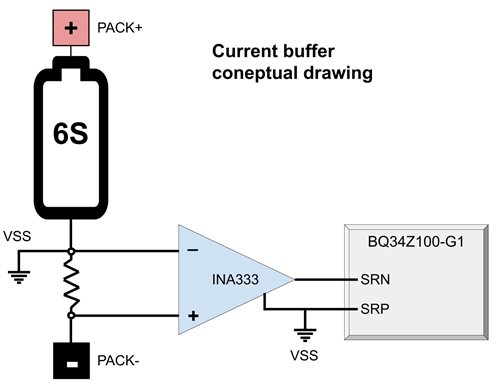Other Parts Discussed in Thread: INA333, TINA-TI
I have used the bq34z100-g1 in several BMS designs now and am very familiar with it. One of the shortcomings of this part is the need for a fairly high sense resistor value. I know TI recommends 5mΩ to 20mΩ for typical designs. However most of my designs are always high current and sense resistor wattage always becomes an issue.
I am trying something new here. I plan on using an INA333 with dual rails to emulate a 4mΩ by gaining up a 200µΩ by a factor of 20x. I realize that is still out of the recommended range but design constraints have dictated that this is what I must do.
I’d really appreciate it if someone could do a brief design review to make sure this will work in a BMS application.
Max pack voltage: 26.7V
Typical discharge current: 22A
Maximum discharge current: 55A (will never exceed 75A)
Maximum charge current: 6.8A
Questions:
- Did I get the polarities right?
- Can this part work with 4.45V chemistry?
- Will this current sense buffer work to emulate a higher sense resistor value?
- If I unpowered the INA333 to save quiescent current would I see problematic operation being that SRN would now be undefined? I can probably power down the BQ part first but I was just wondering what to expect if I left it powered.
Let me know and I can PM the schematic to whoever at TI would be willing to look at it.
Thanks!


